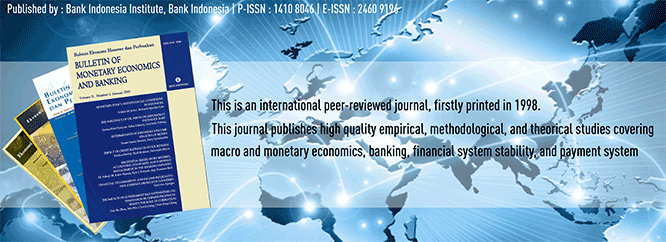
Document Type
Article
Abstract
This paper analyzes the appropriateness of the basic risk weight for the fully secured residential mortgage, recommended in Basel II, to be implemented on Indonesian economy. As the supervisory authorities can customize the 35% of recommended risk weight based on the national arrangements, we analyze the practical ground of the residential mortgage in Indonesia focusing on the probability and the loss given default for this credit type.The result propose a lower risk weight for a fully secured residential mortgage risk weight. For a different types of residential mortgage, this paper suggest the use of Loan to Value (LTV) ratio to determine the risk weight. Rather than using a uniform 50% risk weight as required by the current regulation, our result recommend to give a different weight for a different LTV class; 75% weight for LTV greater than 90%, 50% for LTV between 80% to 90%, 45% for LTV between 70% to 80%, and 40% for a LTV less than 70%.However, the adoption of the proposed residential mortgage risk weight is subject to 2 strict prudential criterias; (i) the loan is used as the residence of the borrower; (ii) the loan is secured by the first lien or first legal charge on the residential property.Keywords: weight risk, bank, mortgage, default, Basel II, Indonesia.JEL Classification: E51, G21
Recommended Citation
Imansyah, Imansyah and Mara, Mirza Yuniar Isnaeni
(2007)
"PENENTUAN BOBOT RESIKO KREDIT UNTUK RUMAH TINGGAL: STUDI KASUS DI INDONESIA,"
Bulletin of Monetary Economics and Banking: Vol. 10:
No.
1, Article 2.
DOI: https://doi.org/10.21098/bemp.v10i1.218
Available at:
https://bulletin.bmeb-bi.org/bmeb/vol10/iss1/2
First Page
23
Last Page
48
Creative Commons License

This work is licensed under a Creative Commons Attribution-NonCommercial 4.0 International License
Country
Indonesia
Affiliation
Otoritas Jasa Keuangan







